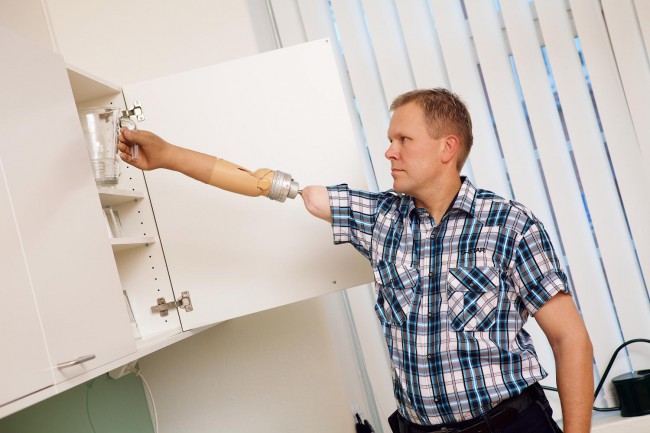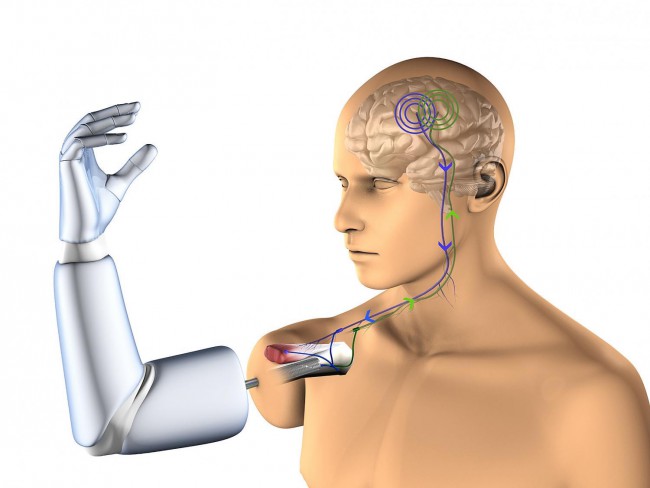
Mexican scientist Max Ortiz Catalan (Max Ortiz Catalan) has developed the world’s first prosthetic, connecting directly with body tissues: bone, muscle, and nervous. The study was conducted at Chalmers University of Technology in Gothenburg (Sweden) in cooperation with Sahlgrenska Hospital.
Scientists created the device becomes an extension of the human body, so as to attach use osseointegration, one type of implantation in which there is direct contact and functional relationship between the implant and bone tissue. Earlier osseointegration was used mainly in dentistry.
The main condition of implantation is the use of inert materials for the manufacture of parts of the prosthesis, unable to cause immunological reactions. The developed device is attached to the bone with titanium implants, the electrode system, connecting directly with the muscles and nerves, allows you to transfer a stable signal. Thanks to the reliable Union between body and machine, the user can perform minute, precise movements.

A resident of the city of Haparanda (Haparanda) in the North of Sweden Magnus Niska was the first person in the world who received this prosthesis. The operation to implant the device was performed in January 2013. According to the patient, whose right hand had previously been amputated above the elbow, a new technology returned him to full life, performance. He currently works as a machine operator.
Due to the design of a robotic hand Magnus can not only control a prosthesis by thought, but also feel. He says he feels like a man who won a million on the lottery ticket.
About four hundred people have already received the titanium implant, however, only ten of them this year to the implanted electrode system. Max Ortiz said that the technology of osseointegration does not cause problems with the appearance of inflammatory reactions, irritation or feeling of discomfort, for all that it significantly improves the quality of life.
The installation of a titanium implant are currently under way in the United States, Europe, Australia and Chile, but the author of the design hoped that the proposed method will become the gold standard of medical care to patients with amputations of limbs.
